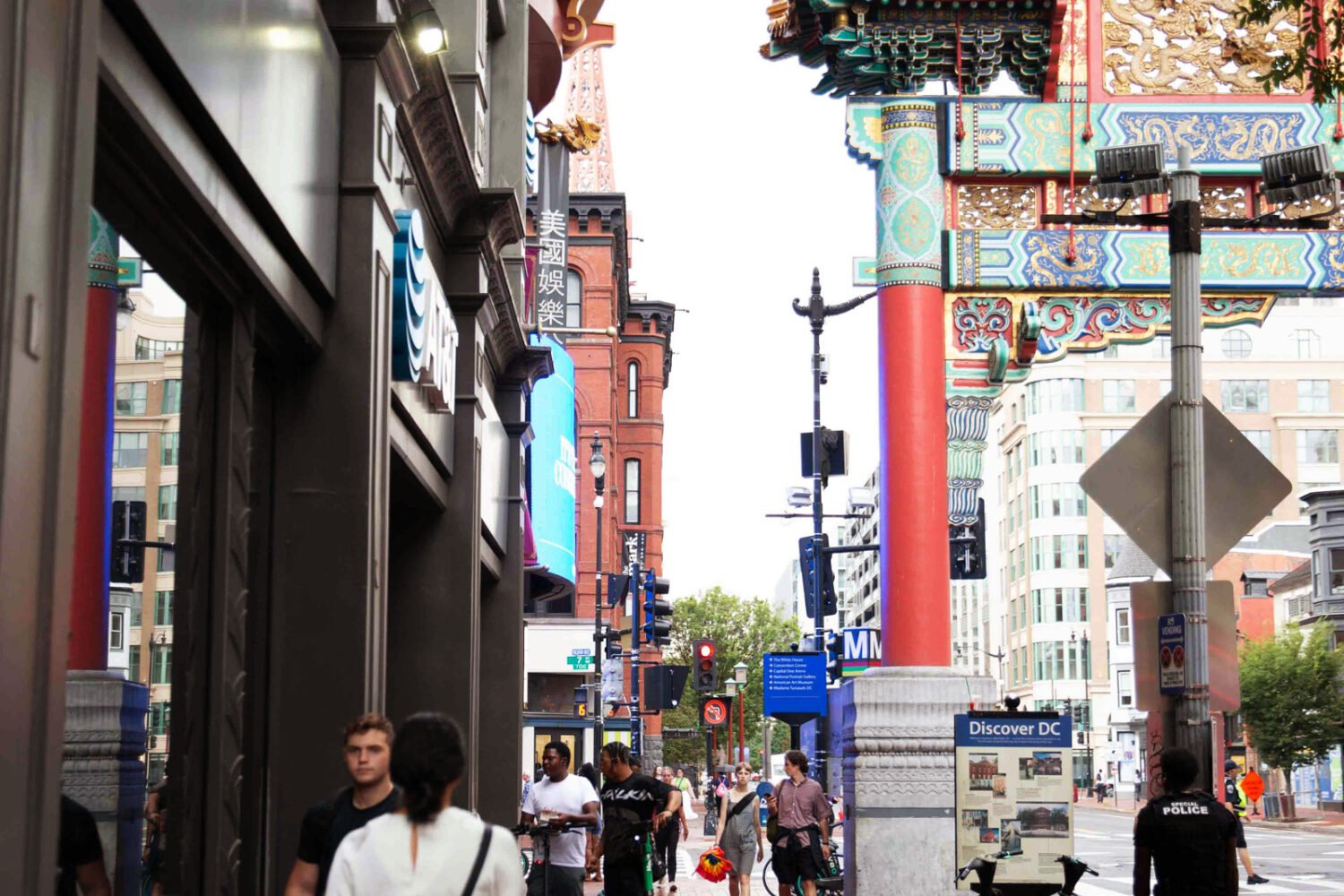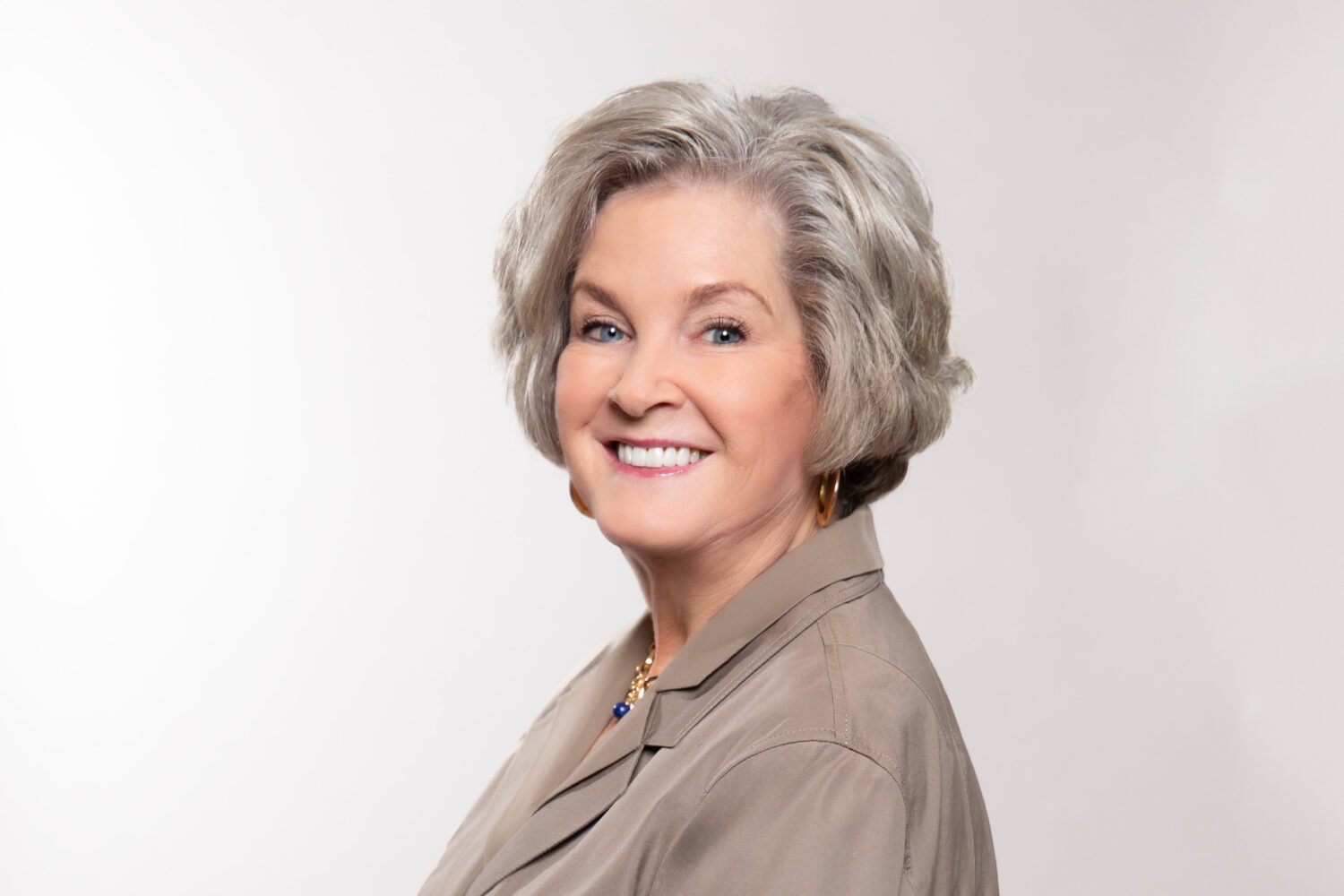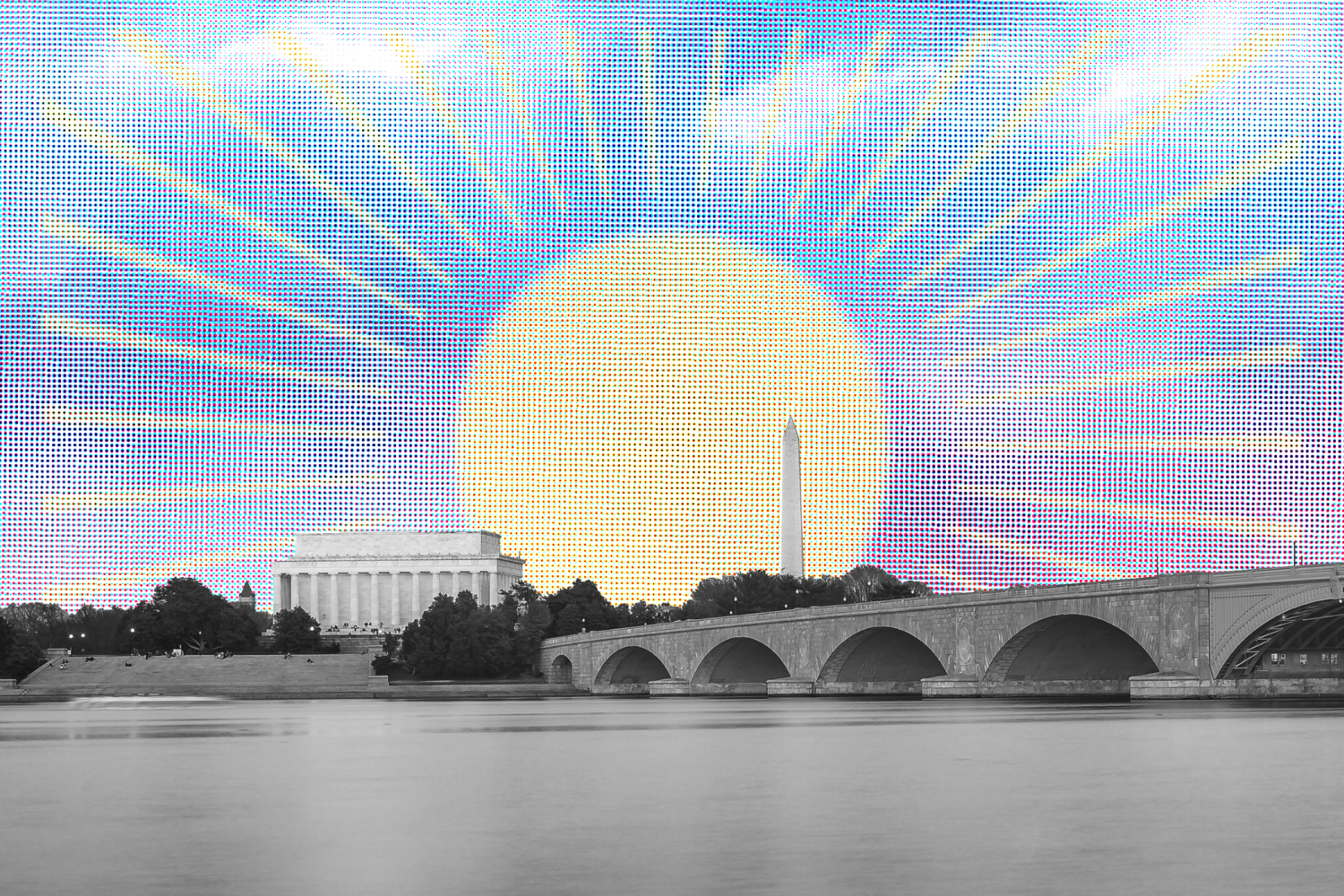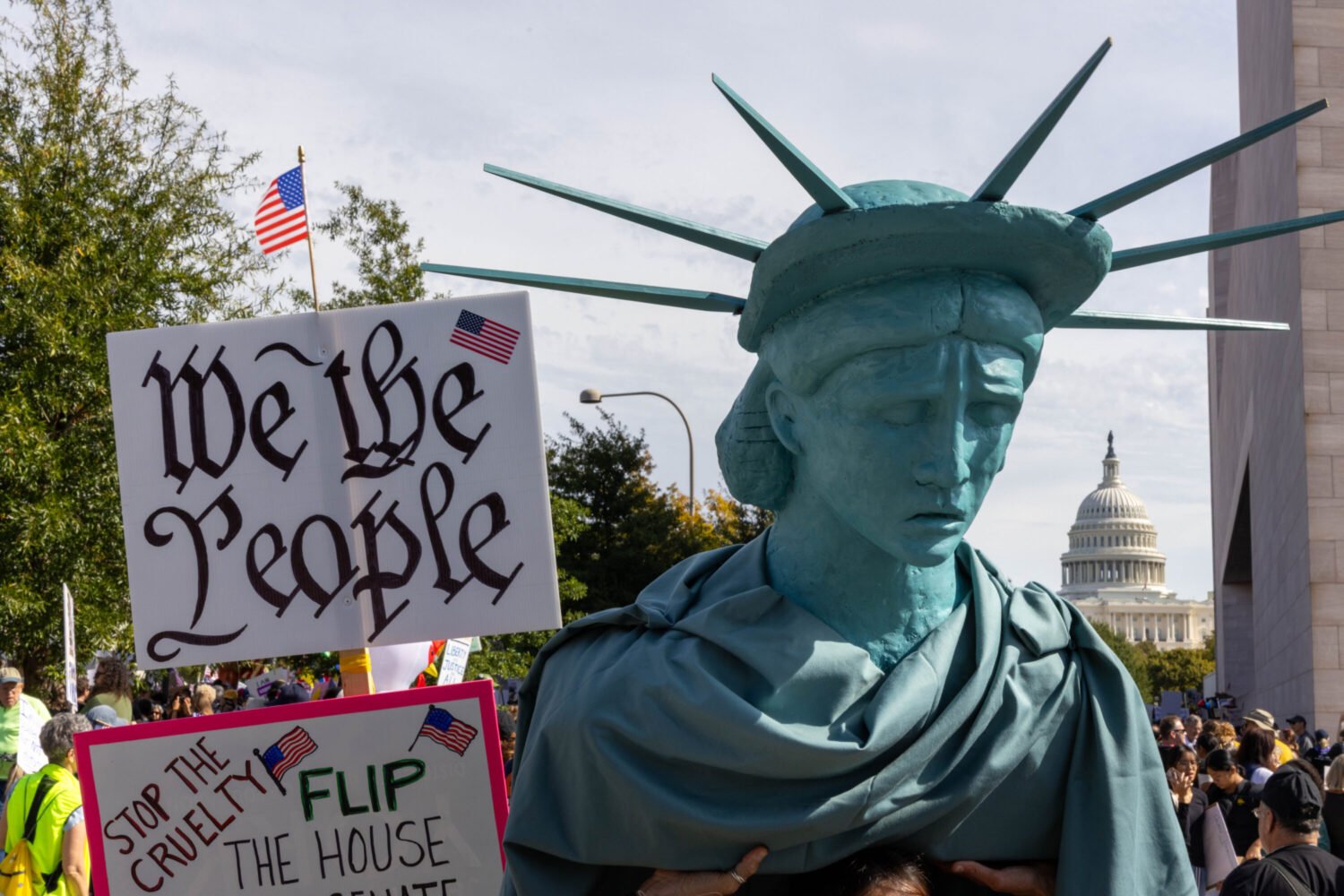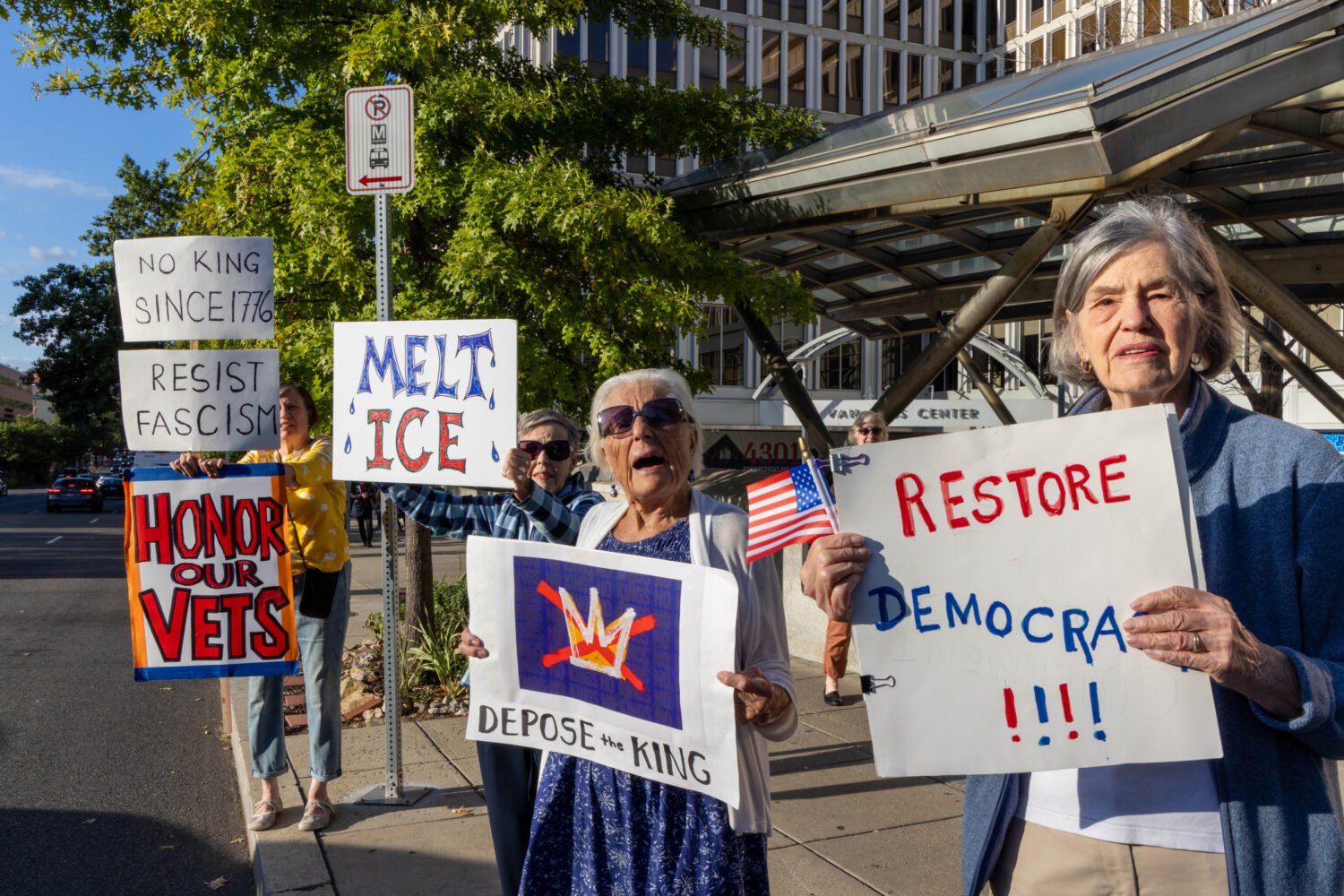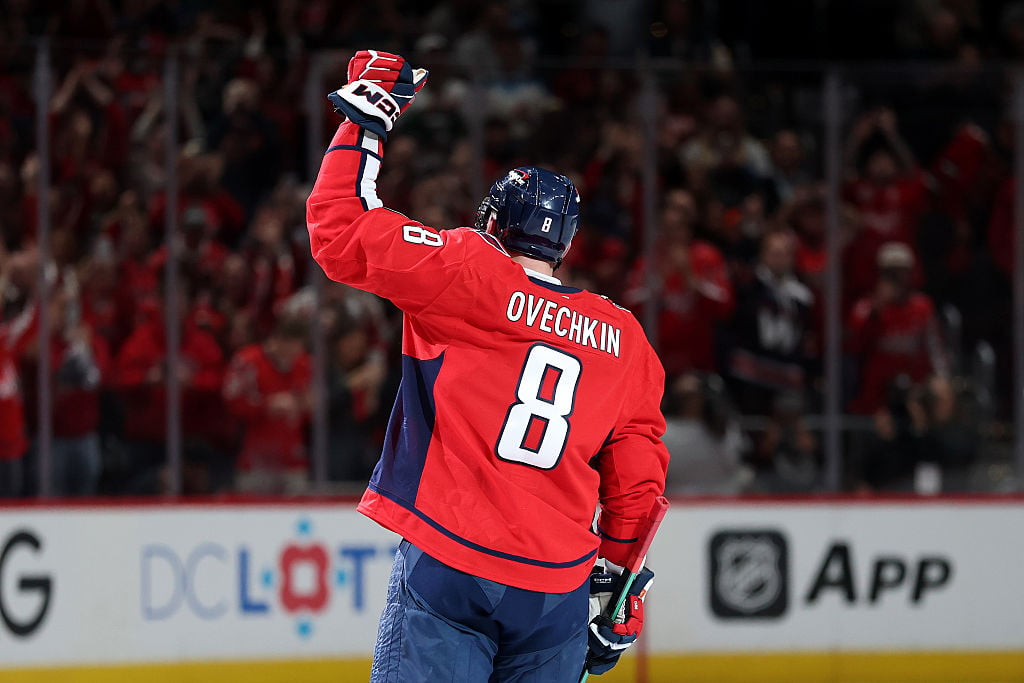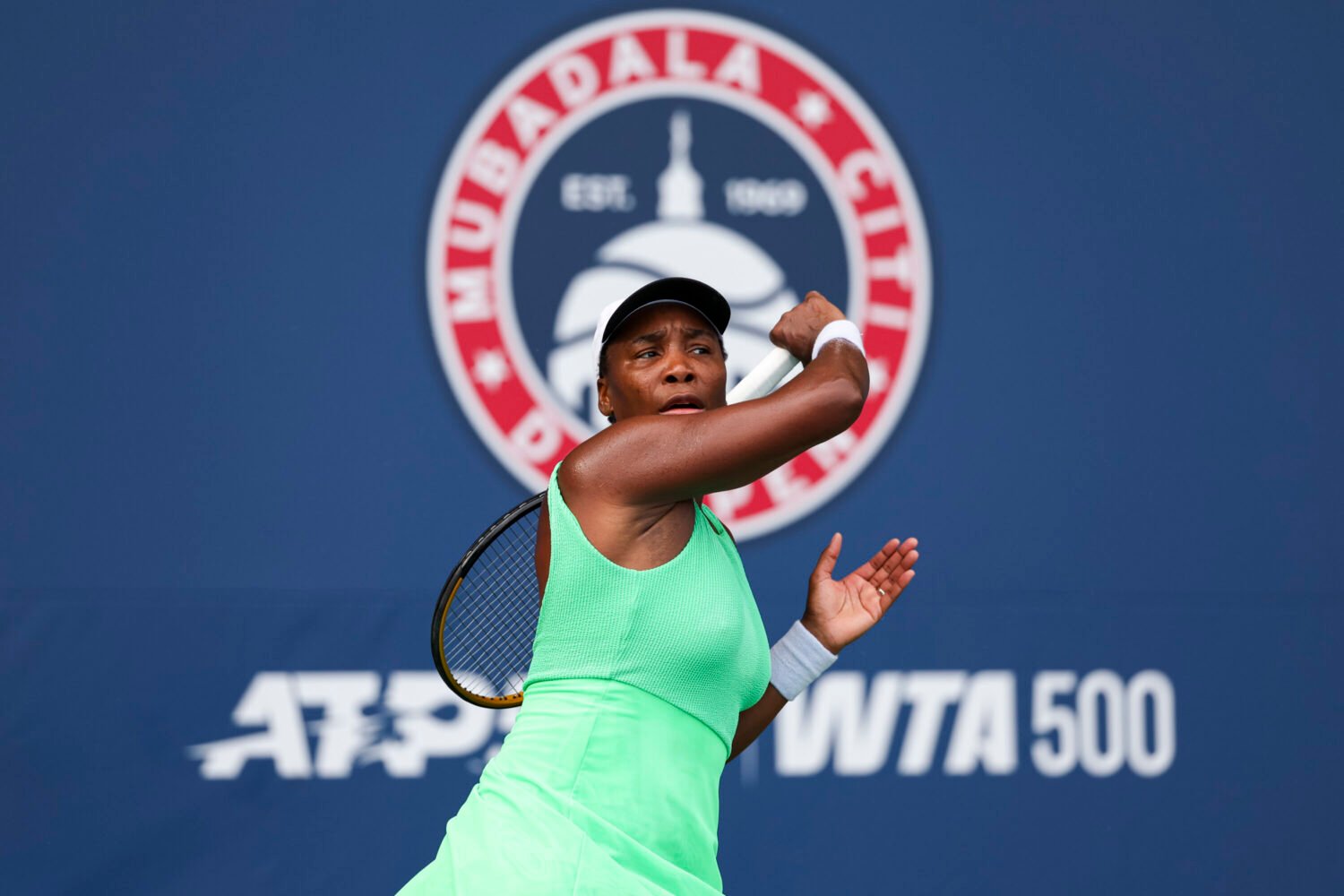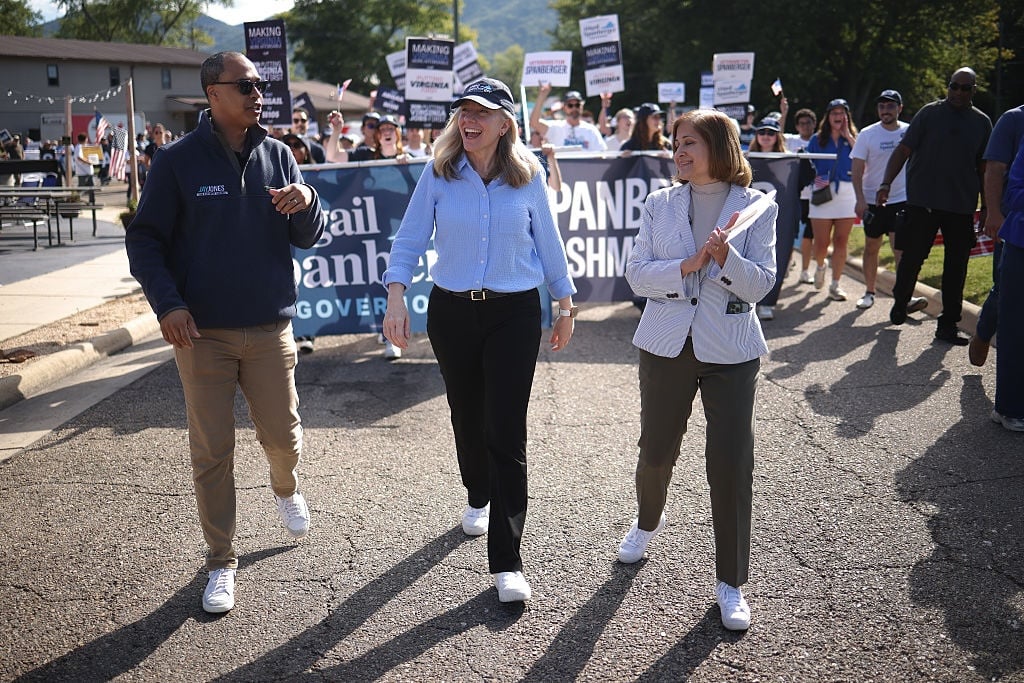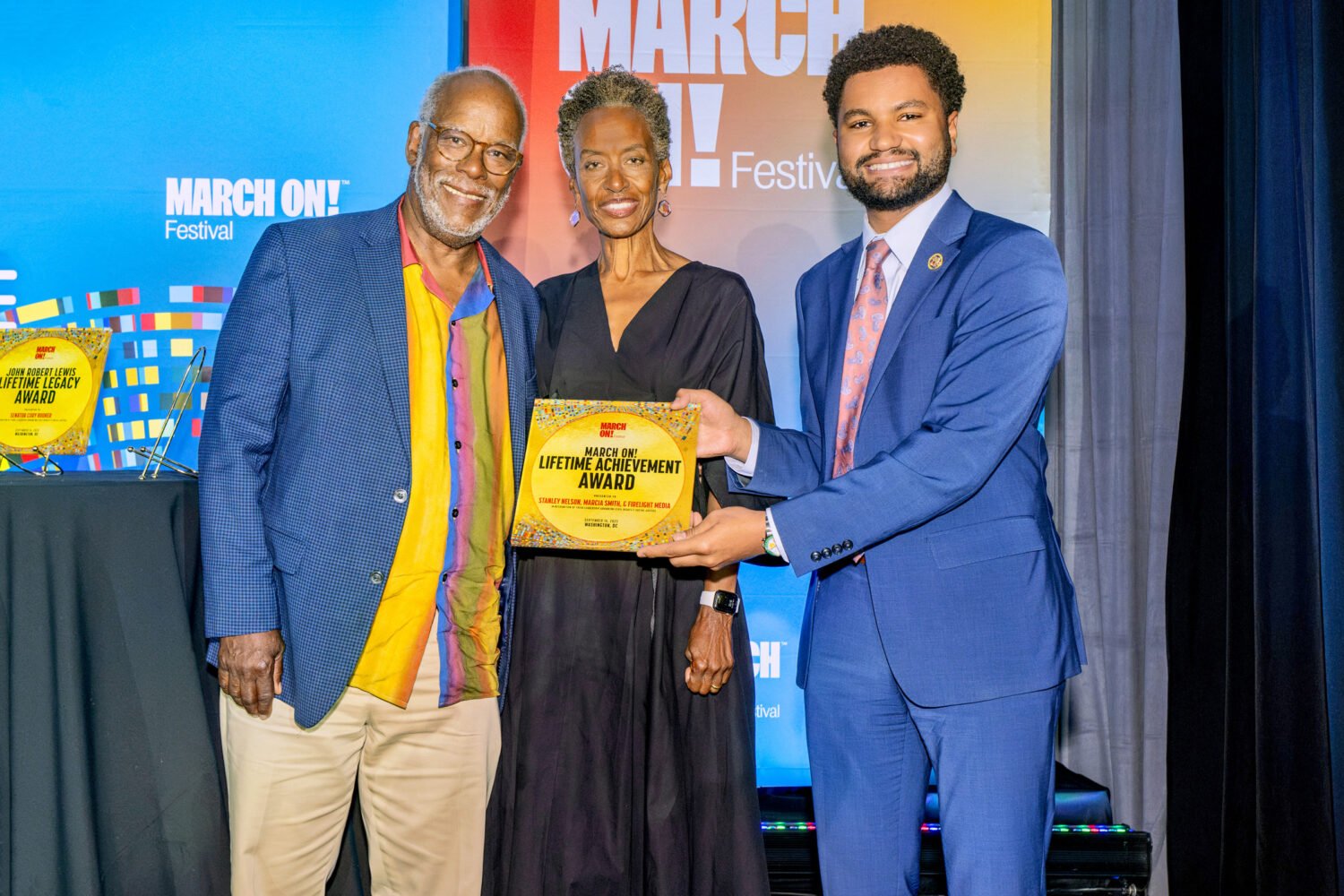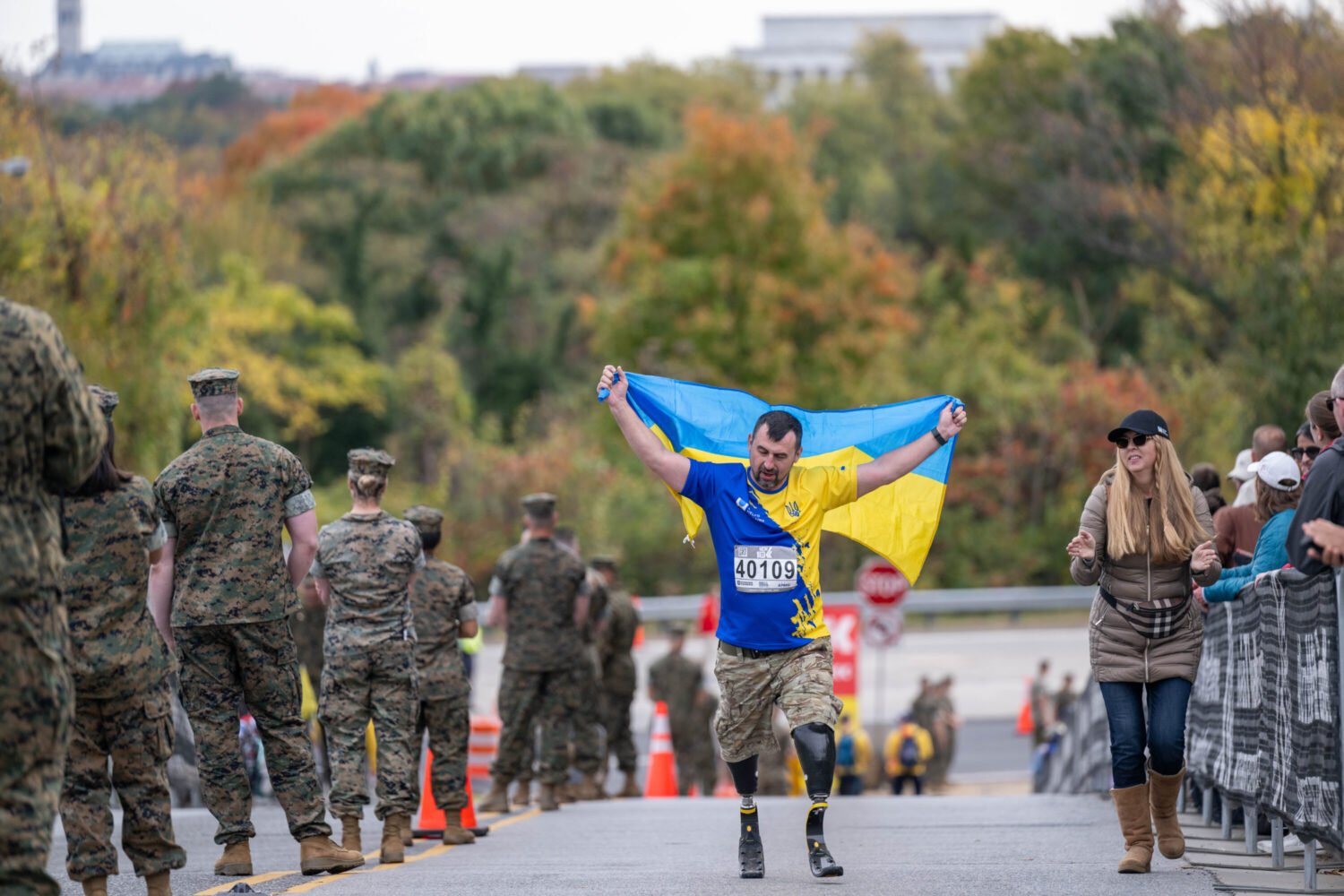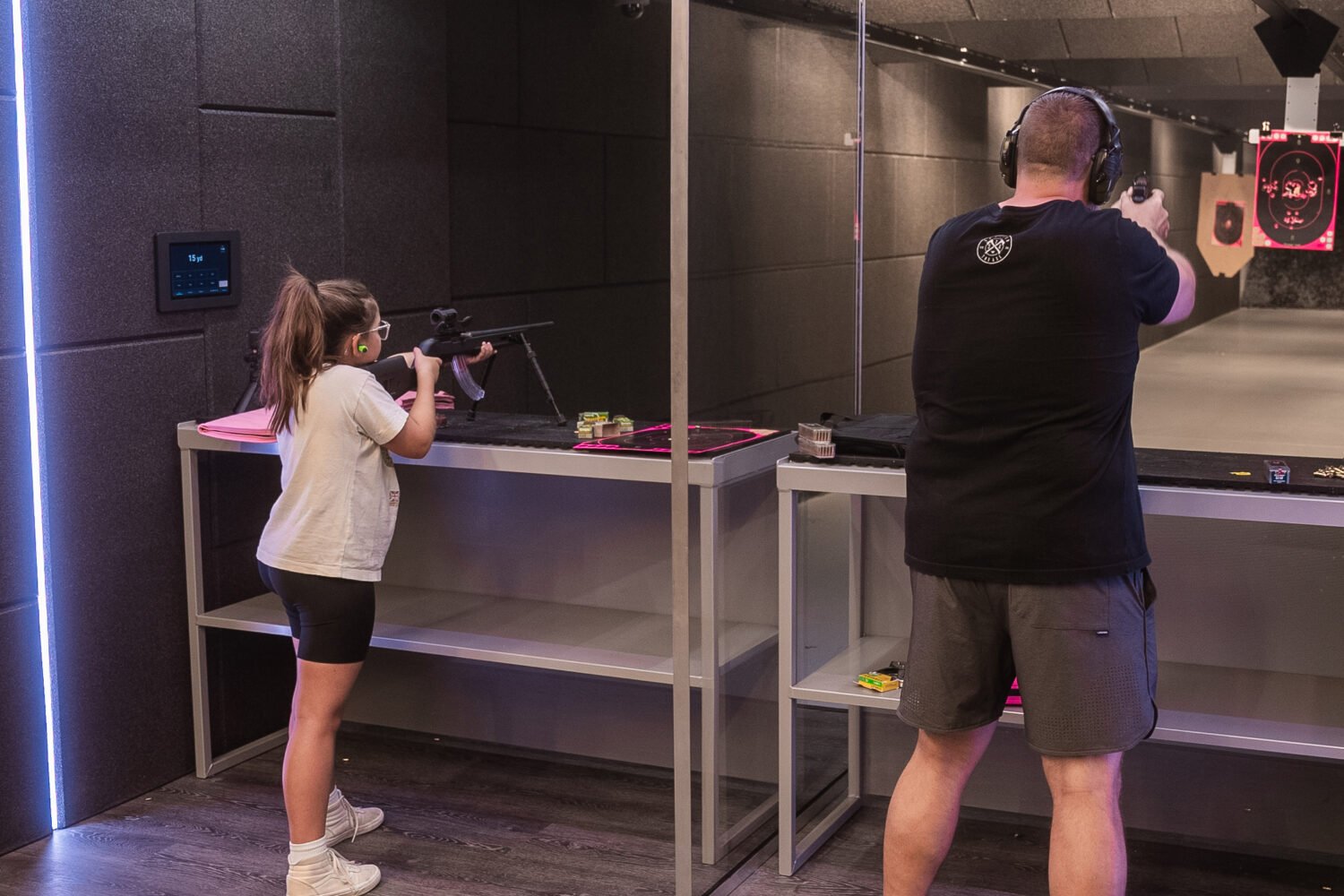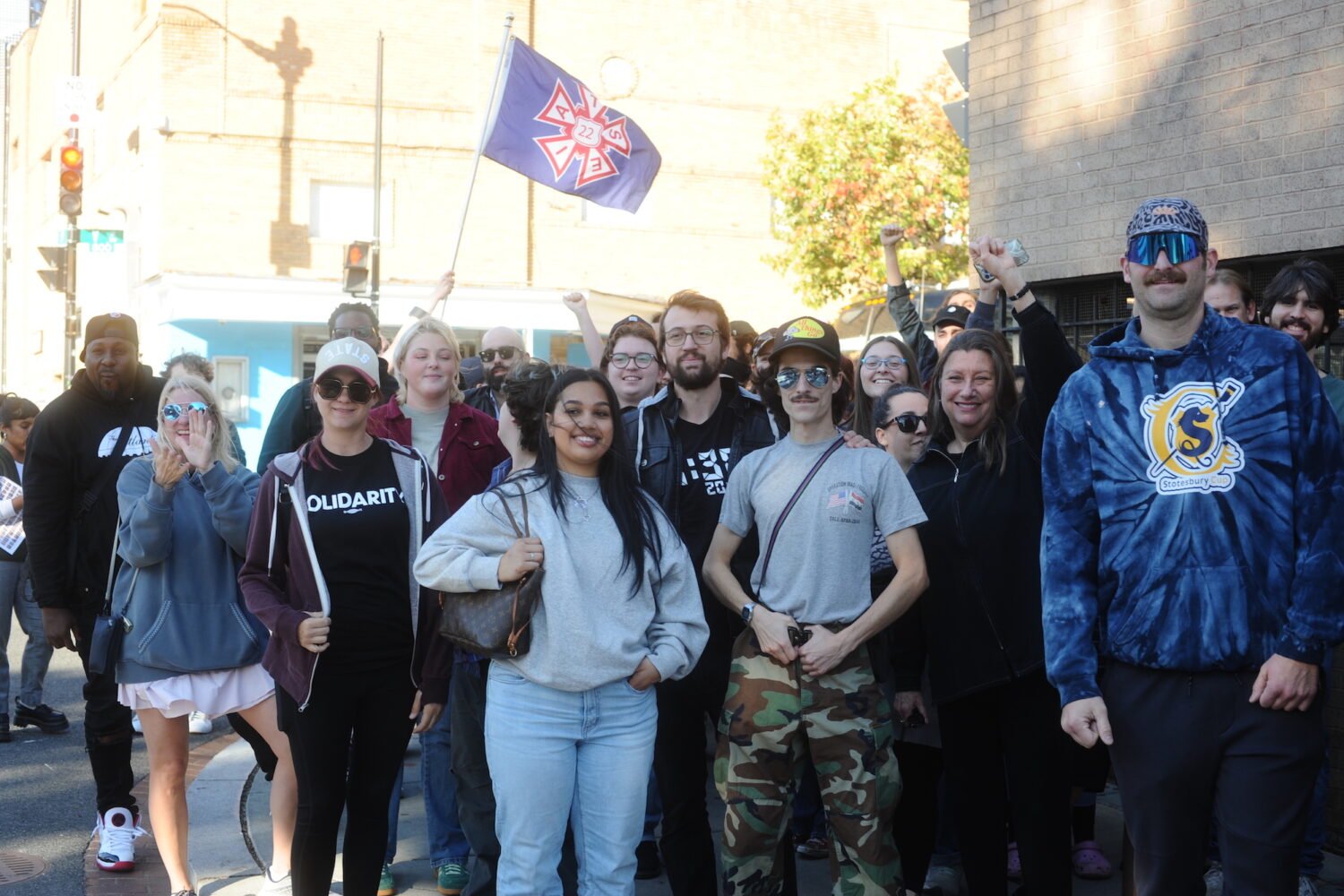National editor Harry Jaffe, born and raised in Philadelphia, is an Eagles fan who has rooted against the Redskins all his life. Editorial intern Caleb Hannan helped with research for this article.
Joe Gibbs first met Dan Snyder at a group home for teenagers in early 1999. Gibbs, the legendary Redskins coach, was out of football and into racing cars on the NASCAR circuit; he was in Washington to raise funds for Youth for Tomorrow, a residential facility in Manassas for at-risk teens that he had founded in 1986.
Snyder was making a run at buying the Washington Redskins that winter. He was relatively unknown in the business community. He was 34, owned a marketing company, was worth about a half a billion dollars, and worshipped the Redskins.
At a fundraising meeting, someone suggested that Gibbs hit Snyder up for a donation to the home. Gibbs said he didn’t know him.
“I’ll handle it,” Dwight Schar said.
Schar, owner of NVR, a residential builder, had met Snyder several times. He got through to him and made the pitch.
“For $10,000 you can be one of the boys,” Schar told Snyder. “For $25,000 you can be one of the big boys.”
Snyder wrote a check for $25,000. He then met with Gibbs and became a regular contributor. After buying the Redskinsin April 1999, he became closer with Schar and Gibbs through their charity work.
“There was no reason for Dan Snyder to come and do that,” Gibbs told me. “There was no thought I was ever coming back to football. I was not trying to get anything from him, and he wasn’t trying to get anything from me.”
The episode in 1999 presaged the relationship among three men now at the helm of the Redskins: Snyder is starting his seventh year as owner; Gibbs is going into his third year as coach; Schar has become part-owner and one of Snyder’s closest friends and advisers.
It also reveals a side of Snyder that has been overlooked by many disgruntled fans and most members of the media, who like to pillory him as a spoiled rich kid who treats the Redskins like his latest toy.
Washington Post columnist Sally Jenkins wrote in 2003 that Snyder “runs the franchise with such lunatic impatience and excess. Self-restraint is apparently not an option.”
Another Post story that year said the media saw Snyder as “an arrogant, interfering amateur.” âž
The “Tank McNamara” comic strip named him Sports Jerk of the Year.
But friends, business partners, and employees describe Snyder as “a great listener,” a man who is loyal and generous.
Joe Mendes, who worked in player development with the Redskins before and during Snyder’s regime, said Snyder “went the extra mile” to help him when his father was ill and his wife’s father died. Mendes had an office across from Snyder’s at Redskins Park. They saw or spoke to each other several times a day during the season. He lost a power struggle with Vinny Cerrato, vice president of football operations, in 2003 and now runs Cornerstone, a sports consulting company.
“I genuinely like Dan Snyder,” says Mendes. “He is a good person.” Mendes had lunch one day at Snyder’s mansion and saw his kids crawl all over him. He says, “It validated my sense that he’s a warm and caring individual.”
Warm and caring. Arrogant and interfering. Which is it?
I set out to square these opposing perspectives and to see if Snyder had changed since he bought the team for $800 million in 1999. We know that he has used his business acumen to turn the Redskins into a brand that mints money. That he has used aggressive marketing to make the Redskins franchise the most valuable in professional sports. That he’s expanding his empire into radio stations that will air Redskins games and sports talk. That he’s sinking millions into the amusement-park business. That he is at war with the Washington Post.
Is he still the billionaire brat he was made out to be? Was he ever?
Snyder’s cell phone rings with the jingle that introduces Monday Night Football. He picks it up.
“Hey, Lynn,” he says.
As in Lynn Swann, the former star receiver for the Pittsburgh Steelers who’s running for governor of Pennsylvania.
“Sorry I couldn’t be there with you all,” Snyder says. “Good luck.”
Schar, a major Republican contributor, was holding a fundraiser for Swann. Snyder had written a check.
I ask Snyder if he’s a Republican.
“Yes,” he says. He says he voted for George Bush. “But I am very angry with Bush. I don’t like what he’s doing in foreign affairs, and I think he’s messing up the economy.”
We are in a booth in the back corner of Olives restaurant in Aspen’s St. Regis Hotel. Snyder has arrayed himself feet-up on a banquette. He’s wearing a short-sleeve T-shirt with a small Redskins insignia, loose workout pants, sandals. His face is unlined. If not for flecks of gray in his hair, he looks like he’s in his twenties.
Snyder’s entourage consists of Karl Swanson, his key press guy. Swanson is big enough to pass for a retired linebacker. Actually, he’s a reporter turned PR man. He’s been with Snyder since 1997.
Aspen, the playground of the super-rich, is Snyder’s summertime base. Saudi prince Bandar bin Sultan just put his place there up for sale for $135 million. Snyder bought a Tuscan-style mansion on Buttermilk Mountain four years ago. His mother and sister spend summers there. He can visit other NFL owners, such as Jerry Jones (Cowboys), Zygi Wilf (Vikings), Lamar Hunt (Chiefs), and Steve Tisch (Giants), in the Rocky Mountain air.
“Most of them rent,” he says.
Snyder doesn’t stay put for long. Redskins One, his 14-passenger jet, is parked at the Aspen airport. He’s just back from a meeting of NFL owners in Detroit. Before that he took his wife and three young children for a private cruise in the Mediterranean with Dwight Schar’s family. Was it a big ship?
“Kogo," he says. “Two hundred and thirty-five feet long.”
In Aspen he mixes work and play. Joe Gibbs brought some friends out for a few days. Mark Shapiro, whom Snyder plucked from ESPN to become CEO of his Six Flags venture, is there with his wife and children. And he’s meeting a reporter—a major rarity.
Snyder quit giving substantive interviews in 2002. First he stopped talking to reporters during the season. Then, with very few exceptions, he went mute to the media. Says Snyder, “I was tired of getting beat up.”
My request for an interview at first got a maybe. Midway through the long process, Swanson wrote, “It still isn’t a NO.” To get to a yes I started interviewing his friends and business partners. Each session was part interview, part audition. Then we negotiated: If I would agree to not use unidentified sources and promise to give Snyder a chance to react to critics, he would sit for an interview. I agreed and flew to Colorado.
I have covered plenty of spoiled, greedy, power-hungry rich guys in my 30 years as a reporter. Snyder is not even close. I found him competitive, playful, and shockingly normal.
His cell phone went off one more time during our extended lunch. It was his wife, Tanya, trying to arrange a birthday dinner for his sister, Michele. Snyder doesn’t do BlackBerries or Palms or iPods. He doesn’t even use e-mail.
“I go to meetings, and everyone is bent over their BlackBerries,” he says. “I have a friend who’s so addicted he answers it when it beeps at 2 am.”
If Snyder has a regular routine in Washington, it is working at home in the morning, then going to Redskins Park, stogie in hand, where he eats takeout at a conference table and conducts business. He might fly to New York for a meeting and return to read to the kids. It helps having your own jet.
Snyder and Swanson order tomato bisque with lobster. I start with tuna tartare.
As a kid, did Dan Snyder dream of owning the Washington Redskins?
“Never,” he says.
Among the Dan Snyder myths is that he grew up privileged in a wealthy area of Montgomery County.
“We didn’t have any money,” Snyder says. Or a television. “There were times when my father and I walked down the street to the TV store to watch Redskin games.”
His father, Gerald Snyder, was a freelance writer. Having been one, I know the financially uncertain lifestyle. Jerry Snyder worked a while for National Geographic, authored books, and wrote for anyone who would pay.
Through grade school, Snyder lived in the Oak Hill Apartments on New Hampshire Avenue with his parents and older sister, Michele. The high rise is on the working-class side of Silver Spring, across from a Sears department store. He went to Hillandale Elementary School.
When his son was 12, Gerald Snyder took a book assignment in England, and the family moved to Henley-on-Thames, a small town near London. Dan enrolled in a private school.
“I wore a blazer and tie every day,” he says. “They were very strict. I didn’t turn in my homework one day, and the teacher caned me on the knuckles. I never forgot to do my homework after that. It made a big impression on me.”
After two years abroad, the Snyders moved back to the States and lived with Jerry’s mother in Queens, in part because Jerry’s brother Charles had died at 33. Charlie was Dan’s godfather.
Says Dan: “You want to talk about tough? Queens made Oak Hill look like a country club. My treat was walking with my father across Queens Boulevard to get ice cream.”
And getting back safely.
A year later the family moved back to Montgomery County and lived in the Pavillion Apartments, on Montrose Road behind Congressional Plaza. Dan went to Woodward High School, which has since closed.
From most accounts, Snyder was not a standout student or a jock. He had buddies like Don Batson, who now works for Snyder’s investment company, and Tony Roberts, now a Bethesda eye doctor.
Says Batson: “Dan and I were new to the school. We were branded as newcomers. The cliques were set. He had been in England; they called him the English kid.”
They hung out in Georgetown on some weekends, Batson recalls. They threw the football around and played basketball. They were Redskins fans.
Here’s what Snyder remembers:
“I was embarrassed to tell my friends that I couldn’t hang out with them on weekends because I had to work. I liked working. I still do.”
His first job was at the B. Dalton bookstore in White Flint Mall—“so I could read.” He read novels and books about business.
After high school Snyder tried college, first at Montgomery College and then at the University of Maryland. It didn’t engage him. What did engage him were ideas about starting a business.
“It surprised me at first,” Batson says. “He completely changed the first year of college. He exploded. It was like a ball of energy waiting to come out.”
Snyder says it came out of nowhere, but when I press him, he gives credit to Uncle Charlie, who had worked as a controller for Loews Hotels. “He was the only real businessman in the family,” says Snyder, “and I thought highly of what he said.”
Snyder’s first venture, when he was 20, was a travel business aimed at college students. Working out of a bedroom in his parents’ apartment, he sold trip packages and leased jets to fly kids to beaches for spring break. Then he told his father he wanted to start a magazine for the college crowd— Campus USA.
One of Jerry Snyder’s gifts to his son was not forcing him to follow a path through college to grad school. Instead, the father joined the magazine project as editor, columnist, and writer under an assumed name. As publisher, the son sold ads and ran the business—which grew fast and needed capital.
Looking around for money in the mid-1980s, Dan Snyder set his sights on Mort Zuckerman, real-estate magnate and publisher of U.S. News & World Report. The kid needed $3 million. Why not hit up a publisher who was worth hundredsof millions?
With chutzpah and unrelenting persistence, Snyder called and pitched and called and pitched and finally got through to Zuckerman. Snyder told Zuckerman he was 25; he was 23. Zuckerman and a partner, Fred Drasner, loaned Snyder $3 million. In two years he lost it all because he couldn’t get enough ads to support the magazine. He broke the news to Zuckerman over lunch at the Waldorf-Astoria.
“Zuckerman hated me,” he says.
But his family still loved him. So in 1989, when Snyder started a marketing company with no cash, his family chipped in. The idea was to develop wallboard advertising and distribute product samples—such as soaps and packages of medicine—to colleges and doctors’ offices. His sister used seven credit cards to raise $35,000; his father took a second mortgage on his property in England.
The business—Snyder Communications—took off.
“By 1990 it was hot,” Snyder says. “It was doubling and doubling and doubling. We started to acquire companies that were doing product sampling in different areas.” When new mothers were sent home from the maternity ward, they were given goodie bags of creams and diapers—through Dan Snyder’s company.
“I bought everybody,” says Snyder.
We are halfway through our first course when Snyder gets into a debate with the restaurant manager.
“This isn’t the first Olives in Aspen,” he says. “There used to be one in the village.”
No, she says. Yes, he says. She goes to the kitchen to consult; he gets on the cell phone to check his sources.
Snyder can talk for days about restaurants; he loves to eat out—Ben’s Chili Bowl in DC at 1 am with his buddies; or Matsuhisa, the sushi joint in Aspen where he and Shapiro and Swanson dined last evening past midnight; or the Palm in Tysons Galleria, where he consumes steaks with Dwight Schar.
Maybe it’s because the biggest treat growing up was an ice-cream cone at the corner parlor.
I ask when he first felt rich.
“In 1991,” he says, “when I bought my first jet. That was a pretty rich feeling.”
He was 26.
He had an even better feeling in 1993 when his friends set him up with a blind date. Tanya Ivey was a former fashion model from Atlanta who was selling lines of designer clothes. “We became instant pals,” says Snyder. They married in April 1994.
Mark Jennings was a business partner and friend to Dan Snyder in those days. Jennings was in private equity; Snyder Communications was hungry for capital. Jennings helped the kid get financing and took a seat on Snyder’s board.
“Dan went a mile a minute,” Jennings says in a phone interview. “He was the classic entrepreneur.”
Jennings, now a managing partner in Generation Partners, an investment-banking firm in Greenwich and San Francisco, is still part of Snyder’s inner circle. Their families vacation together; Jennings has served on several of Snyder’s boards.
“Dan started a company that didn’t work, then changed it again and again,” Jennings says. “He grew Snyder Communications organically and then by acquisitions.”
Jennings chaired its audit committee. He saw the guts of the growth and the deals. He had fiduciary duty to make sure the books were clean and the profits were real.
No one has questioned Snyder’s corporate dealings. He likes to say he has never been in court.
“I am a goody two-shoes,” he says. “Business ethics are important to me.”
The key to Snyder’s success, Jennings says, is that “he really listens to people. He makes assumptions, asks questions, absorbs information. He has that ability not to get wedded to his opinions. He knows that he doesn’t know everything. He has hundreds of ideas. No idea gets left on the table. If it’s good, he follows up.”
Snyder’s success is not a great advertisement for MBA programs. The only degree on his résumé is an honorary one from Post University, when Snyder gave a commencement address.
“Dan could run the creative side of an ad agency,” says Jennings. “He could also run an investment bank.”
In 1992 Snyder expanded his company into telemarketing, aiming at the untapped immigrant market. His revenues rose from $2.7 million in 1991 to $4.1 million in 1992 and $9 million a year later.
“Boring but booming” was the way Washington Post business columnist Jerry Knight described Snyder Communications.
In 1996 the company went public. Through the sale of stock, Snyder’s top investors turned a huge profit. Among them were Hollywood mogul Barry Diller, New York investor Dan Lufkin, and lawyer and Democratic Party icon Robert Strauss.
To repay ZuckÂerman and Drasner’s $3-million investment in the failed magazine project, Snyder gave them a piece of his company; their share is now worth about $500 million. His parents cashed out for $60 million; Jerry and Arlette bought their first detached house with a yard, in Potomac.
At 31, Dan Snyder became the youngest CEO of a company on the New York Stock Exchange.
He continued to buy marketing and advertising companies. His most high-profile acquision was Arnold Communications in 1997. By 1998 he sat atop a corporation with 12,000 employees, 77 offices in 16 countries, and nearly $1 billion in annual revenues. No question, he was a winner.
But he lost the restaurant argument with the staff at Olives. Turns out the eatery in the back of the St. Regis was the first and only one in Aspen.
Snyder does not like to lose at anything. He put on a sheepish grin and said, “I guess I was wrong.”
In the fall of 1998 Dan Snyder called Thomas McCormick, his lawyer and adviser. “Have you read the paper?” he asked. “The Redskins are up for sale.” Longtime owner Jack Kent Cooke had died in April 1997, and his estate was selling the hometown team.
“You want to buy it?” McCormick asked. “That’s crazy. It will be expensive.”
“Can you get me the book?” Snyder asked, referring to the sales document. The team’s price tag was $800 million.
Four groups had formed to compete for the team. One included Joe Gibbs; another brought together a Texas banker and Washington real-estate man Ted Lerner.
New York real-estate moguls Howard and Edward Milstein emerged as the front-runners. Snyder asked Mort Zuckerman to set up a meeting. He and the Milsteins hit it off. Snyder put up $100 million and joined their ownership group as a junior partner.
“I was so excited,” he says. “My father loved it.”
But the NFL owners didn’t love the Milsteins or their offer and declined their bid. Snyder thought, “Hell, I’ll go do it myself.”
The process, he says, was brutal. He pulled together cash from his bedrock investment team—about $120 million from his accounts; $90 million from his family; $90 million from Zuckerman and Drasner—and borrowed the rest. The financing was solid. What remained was romancing the NFL owners.
Snyder flew around the country and tried to meet every owner. He shook hands with many of them, from Bob Kraft of the New England Patriots to Al Davis of the Oakland Raiders.
He produced and distributed a binder about himself and his company. He asked CEOs he had worked with over the years to write reference letters, including Wizards owner Abe Pollin.
“They liked it. They accepted it,” he says. “That was it.”
On May 25, 1999, the NFL owners met in Atlanta and approved the sale 31–0. Snyder walked out of the conference to phone Jerry Snyder.
“Dad,” he said, “we got it.”
In rushing to call, Snyder breezed right by the row of TV cameras and reporters who had been camped out all day to record the first words of the new owner.
Snyder recalls the moment. “I didn’t know what to do,” he says.
George Michael, the king of sportscasting in DC, watched him walk by and, like most of the journalists, took it as an affront. The reporters turned to one another and traded epithets about the young man’s arrogance.
Says Michael: “It started that first damn day in Atlanta.”
“It” being Dan Snyder’s image as dismissive of the press. “He had no idea what he was headed for,” Michael says.
From age 20, Dan Snyder was a master at selling himself in small rooms to other businessmen. He became a taskmaster to his staff. He had never faced a camera to speak to the press.
“I just wanted to disappear,” he says.
George Michael has seen a few owners in his 26 years as sportscaster for NBC affiliate WRC-TV. He and the rest of the DC press were used to Jack Kent Cooke, who became majority owner in 1969. Besides being 50 years older than Snyder, Cooke was a cosmopolitan character who had owned newspapers and knew how to handle the media, even though some called him, in private, the “billionaire bully.”
Cooke would often begin a press conference with “My dear boys” and charm the reporters. He also had won three Super Bowls, which helped inoculate him from criticism.
Michael would become close to Snyder; both had cancer at the same time: Snyder’s was thyroid, Michael’s was melanoma. “When word got out that I was sick,” Michael says, “the first call came from Dan.”
Michael also had a business relationship with the Redskins: He and WRC-TV broadcast Redskins preseason games for five seasons. Through friendship and business, he watched Snyder and the camera.
“He’s different once the camera comes on,” Michael says. “It’s as if he’s on the witness stand with you as the prosecutor.”
After the Atlanta debacle in May 1999, Snyder sought out George Michael and Sonny Jurgensen at the Kemper Open golf tournament. He apologized.
Is it possible, I ask, that Snyder is shy?
“That’s true,” he says. “I’m shy until you get to know me. Then I’m fun. I’m the daddy-o at home.”
Snyder is also an educator—through his foundation work.
Take Dave Kiehn, an academic coach at DC’s Dunbar High whose position is funded by the Redskins’ foundation.
Kiehn graduated from the University of Pennsylvania and joined Teach for America. At Dunbar, he tutors members of the football team. “The only reason I’m here is because of the Redskins,” he says.
Snyder won approval to own the team in May 1999 but didn’t take the reins until July. He used the interim to create the Redskins’ charitable apparatus.
“He had been a fan a long time,” says Karl Swanson, “but he couldn’t tell what the Redskins did for the community.”
Snyder asked researchers at his communications company to find out what other NFL teams did on the charitable end. The employees reported that most teams gave money to other charities, such as United Way, or donated team jerseys or hats and tickets. “I think I know what to do to raise money,” Snyder told Swanson.
His idea was to set up a leadership council of business leaders. It would be a club. Membership cost at least $10,000 a year. Twenty executives quickly signed up. The number is now 28, including developer Adam Bernstein, FedEx chair Fred Smith, and TV talker Larry King, and rates go to $60,000. The council raises more than $250,000 a year. Snyder matches their contributions.
In exchange, the members get to spend a day at Redskins training camp and lunch with Snyder and the coaches. Just before the NFL draft, Snyder hosts a dinner at FedEx Field, where coaches discuss prospects.
“Pretty soon we’d raised over $1 million,” Swanson says. It’s now close to $2 million.
The foundation has renovated football fields and erected scoreboards throughout the region, including at DC’s Spingarn, Anacostia, and Ballou high schools. The Fourth and Life program brings senior high-school players to talk to pro players about life after football. The Rookie Reading Program sends first-year pros into local schools.
Dave Kiehn at Dunbar High says the Redskins foundation funds bus trips to college fairs. “It’s the first time many of our kids spent a night in a hotel,” he says. Dunbar also got a grant to build a locker room.
“We didn’t have one,” says Kiehn. “All we had were hooks on a wall and milk crates. The Redskins sent two players to help us put the room together. They brought our kids to FedEx Field.
“I can’t put a dollar figure on that. They taught my kids to reach for success.”
Snyder would rather not talk about his family foundation, which is separate from the Redskins charitable arm, or his personal charitable work. “That’s more of a private matter,” he says.
I knew he had contributed to children’s causes.
“My first daughter was born at 27 weeks,” he says. “My wife lived for three months at George Washington hospital while she was in treatment.”
His daughter has thrived. When she came home, Snyder called Ned Zechman, CEO of Children’s National Medical Center. “Come see me,” he said. “I want to do something for kids.”
That something turned out to be $6 million for an emergency wing.
He has helped build a communications center for the National Center for Missing and Exploited Children in Alexandria.
Snyder stops there, but Swanson says the Snyders wrote checks totaling $1 million to help victims of the September 11 attacks. He contributed close to $600,000 to help victims of Hurricane Katrina. When the tsunami hit Indonesia in December 2004, a community group got together a planeload of food but ran out of money to finance the flight. Word got to Snyder. He called the shipping company and said, “Ship it.”
In his first three years as owner of the Redskins, Dan Snyder was much more successful at establishing a foundation and giving away money than at running the franchise.
“I made some real stupid decisions,” he says. “I made a lot of mistakes. I’m human.”
We have progressed to the second course at Olives. Snyder forks a chunk of his tuna tartare. He tests it and doesn’t like it. He prefers the crab cakes Swanson is having and orders a pair. He likes my mushroom pizza. I give up a slice.
Snyder took over the Washington Redskins on July 14, 1999. He inherited Norv Turner as coach and Charley Casserly as general manager.
“They were fighting like cats and dogs,” he says. “We were in trouble. I couldn’t have these two guys sniping at one another.”
So he fired Casserly in September.
“You fired the wrong guy,” Casserly told him.
“If you’re right,” Snyder shot back, “you’ll be one of the first to know.”
Snyder also fired a bunch of longtime front-office workers. He brought in his own PR team, lead by Karl Swanson.
Hoping for a quick trip to the Super Bowl, he paid big money for aging stars Bruce Smith and Deion Sanders.
Snyder stuck with Norv Turner through the 1999 season, which was lackluster. With three games left in the 2000 season, the Redskins had a 7–6 record, and Snyder lost patience. He called Turner into his office at 11 am on December 4 and let him go.
“It was one of my worst moves,” he says. “It was plain stupid. I was a new owner pissed about losing.”
It was also the first move that showed fans and reporters Dan Snyder’s impatient side. In business, Snyder could replace a manager in the dead of night with a phone call. The Redskins were considered a public utility, and every move was blared in the media and dissected on sports-radio talk shows.
After Snyder fired Turner, he says, he called Casserly and said, “You were right.”
Snyder called his friend Fred Smith, CEO of FedEx, and said he wanted to talk football. “I can talk shipping,” Smith said. “If you want to talk football, you want Pepper Rodgers.”
Pepper Rodgers knew everyone in football, from college to pro. In 1952 he was the quarterback who won the Orange Bowl for Georgia Tech. He went on to hold coaching jobs at Kansas, UCLA, and Georgia Tech. He got close to Smith when the two tried to bring an NFL team to Memphis. Snyder invited Rodgers to the owner’s box and later hired him as vice president of football operations.
“I talked football with Dan,” Rodgers says. “I was basically his friend. My job was to advise him on football-related things without getting in the paper.”
Rodgers’s wife, Livingston, would babysit Dan’s two daughters; their second was also premature. Doctors warned against another pregnancy. When the Snyders traveled to be with the surrogate who gave birth to their son, the Rodgerses went along.
Says Rodgers: “I wouldn’t say I mentored Dan, but I was someone he could trust, who could speak the language of football.”
After Turner’s firing, Snyder and Rodgers flew out to visit Dick Vermeil, who had retired from the St. Louis Rams after winning the Super Bowl. Vermeil wasn’t interested in being coach. He suggested Marty Schottenheimer. The former Kansas City coach was doing TV work at the time and had been critical of Snyder.
Snyder hired Schottenheimer to lead the 2001 season. Schottenheimer, a square-jawed veteran with a tough demeanor, insisted he become both coach and personnel director. Snyder agreed.
“I let him have too much oversight over personnel decisions,” Snyder says. “That was new to him. He was a good coach.”
The Redskins went 8–8 under Schottenheimer. Snyder called him in and said he wanted him to stick to coaching and give up hiring and firing players. Schottenheimer said no. Snyder fired him.
“He was not Dan’s guy,” Rodgers says.
Says Snyder: “My mistake.” To give Schottenheimer control beyond coaching, that is.
Snyder says he and the coach are good friends now.
Pepper Rodgers knew Dan’s guy was Steve Spurrier, the flashy coach at University of Florida, where his “fun and gun” offense had racked up 122 victories against 27 losses.
“He wanted Spurrier in the worst way,” says Rodgers.
Rodgers and Spurrier came up together in the Southern football clan. Rodgers had coached Spurrier at Florida and then hired him to help coach at Georgia Tech. He brought Snyder and Spurrier together. With much fanfare, Snyder hired Spurrier.
Spurrier lasted two losing seasons. His record was 12–20.
Spurrier brought his college coaching buddies up from Florida rather than hire coaches with NFL experience. He could not measure up to the intensity of a pro-football season. “The whole thing wasn’t working,” he told the Washington Post.
“He quit,” Snyder says.
Says Rodgers: “Steve called me to call Dan.”
In five seasons Snyder had run through four coaches, counting Terry Robiskie, who finished Turner’s last season.
“Dan is smart,” Rodgers says, “and people who are smart think they are smarter than the coach.”
A fan spoke for many with a sign reading fire snyder.
Snyder is finishing crab cakes; for dessert, he eats more humble pie.
In 2003 Snyder moved training camp from Carlisle, Pennsylvania, to Redskins Park in Loudoun County. He opened it to fans. He charged admission. And a parking fee.
“That was another mistake,” he says. “Charging fans to see training camp. Dumb move.”
Snyder always says he loves Redskins fans. But from the perspective of those who have to deal with hassles at FedEx Field—from traffic jams to parking hassles to getting frisked at the gate to getting bombarded by advertising in the stadium to dealing with rowdy drunks—the joy of being at the game has declined.
Steve Lann’s family has had season tickets since the 1950s, when the Redskins played at Griffith Stadium. He’s got a pair of seats at FedEx Field, in the lower bowl at the 45-yard line.
“There’s too much hoopla,” he says. “Fireworks. Loud music. It’s not about the game anymore. They’re trying to generate excitement in an artificial way. It’s a distraction. Redskins fans are loyal and loud—they can do it by themselves.”
Many of the problems, like Beltway traffic, are beyond Snyder’s control. FedEx Field was built by former owner Jack Kent Cooke. Swanson claims the Redskins don’t make a dime in profits from parking at FedÂEx Field. But Snyder is a master at marketing, and he has spun gold from the fans’ loyalty to the Redskins.
According to filings with the Securities and Exchange Commission, the team’s annual revenues have increased from $162 million in 1999 to more than $300 million today. Snyder has pumped up revenues by selling naming rights to Federal Express for $200 million over 27 years; added 10,000 seats to make the field the largest in the NFL with 92,000; increased the number of luxury suites from 199 to 208; added loge seats and “dream seats” with a better view sold at premium prices; automated concession stands and opened new restaurants; created the Tailgate Club for special access at a price and the Touchdown Club, whose members can vault over the season-ticket waiting list for $7,500. He increased sponsorship revenue from $4 million to $48 million.
By 2004 the Redskins were the most profitable franchise in the NFL. Forbes said the Redskins were worth more than $1.26 billion, making it the most valuable team in US sports.
Snyder rolled out some moneymaking clinkers along the way. He told a Washington Post reporter he wanted to sell Redskins cola with star Redskins players pictured on the can. He tried to establish a Redskins charge card that season-ticket holders had to use to buy seats. Neither idea panned out.
In Snyder’s view, he was milking the luxury-suite and -seat market because they are paid for by corporations and wealthy fans. And he was fattening team coffers so he could invest more in it to accomplish one goal: win the Super Bowl.
The disconnect between the fans and Snyder might come from the fact that he never had season tickets; he rarely even sat in the stadium until he took over the owner’s box.
Snyder did not need cash from the Redskins. He had sold Snyder Communications in 2000 for about $2.3 billion; Snyder took away more than $275 million of stock in the new owner’s company.
But he might need fans willing to pay the freight and brave the hassles at FedEx Field. The waiting list for tickets is still miles long, but I have heard many ticket holders say they would not renew, especially after a recent round of ticket price hikes.
In the spring of 2003, Dan Snyder invited Dwight Schar to lunch at the Capital Grill on Pennsylvania Avenue.
“I have a list of 100 people I would consider selling part of the Redskins to,” he said. “You are in the top three.”
Snyder didn’t need the cash, but he wanted to pay down the team’s debt.
Schar, a native of Norfolk, came to the Washington area in 1973 and started working for Ryan Homes. He left four years later and started his own residential development company. NVR is now the region’s biggest homebuilding company and among the top ten in the country.
“Are you interested?” Snyder asked.
Schar bought a 15-percent interest in the team for $200 million.
Snyder sold a similar share to Robert Rothman, a Florida financier he met through contacts at Bank of America. Snyder brought in Federal Express founder Fred Smith for a 5-percent stake. That gave the three minority investors 35 percent of the franchise and left 65 percent with Snyder and his family.
What the change in ownership really meant was the end of the Zuckerman-Drasner era in Snyder’s life. Zuckerman, never an avid fan, had sold his stake to Drasner and Snyder in 2000. Drasner loved the locker-room, cigar-smoking, jet-setting camaraderie of being an owner. If there was a brash and impetuous member of the early ownership circle, it was Drasner.
Joe Mendes describes Drasner as “a kid in a grownup body.” Says Pepper Rodgers: “He was a little bit of an agitator.”
I ask Snyder why Drasner sold his interest in 2005.
“He got married and checked out,” Snyder says. “He sold everything. I miss Fred.”
Drasner could not be reached; rumor has it he’s sailing in parts unknown.
If there has been a change in the way Snyder handles himself as owner of the Redskins, his friends attribute part of the transformation to the switch from Drasner to Schar.
“Dwight Schar is as solid as any part of the Redskins organization,” says George Michael.
Says Pepper Rodgers: “Dwight Schar has done so much for Dan in helping him become the man he is right now. He gave good advice, good friendship—a real steadying influence.”
When I read this back to Snyder, he almost falls on the floor laughing.
“You have to be kidding,” he says. “Our wives won’t let us be together because we kid and laugh all the time.”
Take the time Redskins general counsel Dave Donovan went to his first away game at the St. Louis Rams’ domed stadium. Snyder and Schar saw him calling his wife and family on his cell phone to say how cool it was to be in the stadium before the game. They called the head of security and asked him to send two cops and “arrest” Donovan, saying it was illegal to use a cell phone in the stadium.
Donovan was escorted across the field. It wasn’t until he got to the other sideline that they told him it was a joke.
“We were laughing so hard we almost peed in our pants,” says Snyder.
But Schar’s help in bringing Joe Gibbs back was no joking matter.
As Schar tells it, he and Snyder were talking after the Redskins lost another game under Steve Spurrier in the fall of 2003.
“Do you think Joe Gibbs would ever come back?” Snyder asked.
“No way,” Schar said. “He’s busy with his NASCAR team. He has some health issues. He has part interest in the Atlanta Falcons team. If he coaches, it might be there.”
“My dad really loved him,” Snyder said.
Snyder had invited Gibbs to his home for dinner in 1999 to see if he could lure him back. No dice. The two had kept up at foundation banquets.
Says Gibbs: “I would see him with his wife and children and his mom. I saw how close he was to everybody. He was a family man. That’s how I got to know him.”
On December 30, 2003, Spurrier resigned. Could this be the Gibbs moment?
Through Gary Jones, CEO of Gibbs’s Youth for Tomorrow group home, Schar and Snyder found the former coach in North Carolina. Schar called first.
“Would you be interested in coming back to the Redskins?” he asked.
“Maybe,” he said. “Let me make some calls.”
Days before, Gibbs had been talking to Atlanta Falcons owner Arthur Blank when he got a call that Spurrier had quit. Gibbs was immediately interested in returning to the Redskins.
Schar called Snyder in Potomac. Snyder usually gets by on three to four hours of sleep, but that morning he was asleep at 9 am. Schar asked that he be awakened.
“Dan,” he said, “I think we have a shot at Joe Gibbs.”
Snyder had intended to fly to the West Coast to interview prospective coaches. Instead he flew south to Concord, North Carolina, and met for eight hours with Gibbs in a conference room at the airport.
Schar says Gibbs took him aside at one point. “I’ve heard all these things about Dan,” Gibbs said. “I don’t know whether I can work with him.”
“One thing about the guy,” Schar told him, “he’s got a good heart.”
Snyder met with Gibbs and Vinny Cerrato for a second round that lasted 11 hours. Gibbs and Snyder left the room.
“Do you want to do it?” Snyder asked.
“Make me an offer,” Gibbs responded.
The offer was five years as coach and head of football operations for more than $5 million a year.
“It was done in 30 seconds,” says Snyder. That’s all it took for Snyder to hand over the Redskins and give up his role as owner/coach: “I just had to find the right guy to run the team.”
When Snyder hired Gibbs, the Washington Post covered it as if the Messiah had returned: front-page stories, banner headlines, genuflecting columnists.
But after his first season was a disappointing 6–10, one Post article wondered if Gibbs was too “old.” Which prompted Gibbs to exchange angry words with Post Company chairman Don Graham.
Every sports franchise believes the hometown paper should be a bit of a cheerleader; every newspaper believes its job is to provide balanced coverage. But to say the Post and Snyder are at loggerheads is an understatement.
The Redskins embraced longtime Post reporter Mark Maske, who had covered the team for years, worked hard to develop sources in the organization, and played racquetball with Snyder. Relations soured when the Post assigned Nunyo Demasio to the beat. A pro-basketball reporter from the Seattle paper, Demasio developed sources among players, agents, and coaches who didn’t sing the Redskins tune. Stories about contract disputes and disaffected athletes started to appear in the sports pages.
When one of Snyder’s nannies sued the couple over a wage dispute, the Post gossip columnists found it delicious. “Evil,” he says.
A Post profile of Tanya Snyder dubbed her “the babe in the box,” as in owner’s box.
Then there was “treegate.”
Snyder wanted to clear trees from the hillside below his Potomac mansion that spilled down to the Potomac River and the C&O Canal, which is controlled by the National Park Service. Snyder’s lawyers negotiated for three years with NPS officials.
The talks resulted in a signed approval to cut the trees, and Park Service officials supervised the clearing. But when neighbors objected, the Post wrote stories casting Snyder as a cavalier landowner.
In fact, a 19-page report by the Department of the Interior inspector general said the Park Service “granted permission to Mr. Snyder to cut down native trees in 2004” and that “NPS failed to follow any of its established policies and procedures.”
Readers came away with the sense that Snyder had raped the forest.
In similar fashion, when the Redskins added some seats to FedEx Field that were partially obstructed by pillars, the team invited reporters and fans to sample the seats. Neither the Post nor the fans objected. The Redskins advertised the seats as they were. When “several” disgruntled fans protested to the Post, the paper covered it as another affront by a greedy owner.
The skirmish turned ugly in March 2005, when the team announced that it would not renew 279 general-admission season tickets the Post had owned since the 1950s. Redskins officials said Post employees were scalping the tickets, which can go for $4,000 each for prime Dallas Cowboys games. Swanson says police seized a parking pass belonging to Don Graham from a stadium scalper. Graham apologized in a handwritten note.
The Post claimed the seats were rewards for “newspaper-delivery people—and their families” who paid for the tickets themselves.
In the war of words, the Post drove home the image of an owner who didn’t care about nannies or trees or fans. Snyder’s side rarely got out, partly because he remained silent.
Beyond what they heard in the media, the perception of many fans at FedEx Field was that Snyder was greedy because food was expensive and parking a nightmare. They blamed the owner for making their lives miserable just getting to the stadium.
Behind the scenes of Snyder’s life, his friends say, Dwight Schar and Joe Gibbs have been instrumental in the mellowing of the man.
Snyder tells me his true change of heart took place in the spring of 2003.
Snyder had come face to face with some of his human frailties. He had been diagnosed with thyroid cancer in 2001; it had been successfully removed. He and his wife had had trouble with childbirth.
In the spring of 2003 his father returned from a trip to Japan complaining of chest pains. Gerald Snyder, 69, had been suffering from diabetes and heart disease. He had bypass surgery.
Jerry had been Dan’s partner in business and life. They had teamed up on Snyder’s college magazine; they’d shared defeats and victories; when Dan bought the Redskins, his dad sat in the owner’s box.
“He was my best friend in the world,” Snyder says. “He was gentle. He had a great sense of humor.”
Even in the hospital. One day father and son called in the doctors to check out a lump Jerry had developed on his chest. The worried doctor pulled up the blanket to discover a football.
When he was being wheeled into surgery to repair his faulty heart valve, he said, “Why don’t you guys take me around a couple of times. I’m not really in a rush.”
Gerald Snyder didn’t make it much beÂyond the surgeries. He died in late May 2003.
“It was the worst ever thing for me,” Snyder says. “I miss him every day. I still pick up the phone to call him.”
Snyder contributed funds to B’nai Israel, their congregation in Rockville, which dedicated its original building to his father.
Has his father’s death changed him?
“I feel a sense of reality that I never had before,” he says. “You realize you may not wear a cape and be Superman.
“Life is precious. My youngest son turns four in two days. I wish he could be there.”
After Joe Gibbs went 6–10 his first season back with the Redskins, he then went 10–6 and took the team to the playoffs for the first time in a decade.
I caught up with Gibbs a week before training camp.
How are things going between him and Snyder?
“Anyone will tell you the relationship between an owner and a coach is close and complicated,” he says. “You go through bad times and you go through high times.
“Dan and I have gotten into a real partnership,” he says. “But he is the boss.”
Gibbs has seen a lot of owners in action.
“A certain number of owners want to run a business, and others want to win,” he says. “Dan Snyder wants to win.
“Since I have been here there’s nothing I have ever discussed with him where he has ever said no. Such support and partnership is phenomenal.”
How does Snyder compare with Jack Kent Cooke?
“Both are more focused on winning than making money. Both are super smart.”
But it’s clear that Snyder is more present than his predecessor was.
“We talk a lot,” Gibbs says. “We are back and forth all the time. We work down the hall from one another.
“I count on his opinion. He’s very instrumental on the draft, the salary-cap, free agency, strategy on how the team should be built.”
After talking to Gibbs and Snyder, I see their strategy more clearly. There’s a salary cap on players, and all teams operate with the same amount of money. But there’s no limit on how much an owner can spend on coaches. That’s where Dan Snyder is pumping extra money. His coaches are the highest-paid in NFL history.
“No question he’s invested heavily in the coaching staff,” says Gibbs. “Will it pay off? We’ll see.”
with the washington Redskins in good hands, Dan Snyder has gone on the prowl for new prey in the business world.
RedZone Capital, his private-equity firm, is looking for acquisitions. He’s buying radio stations to broadcast Redskins games. He pounced last fall on Six Flags, the nation’s largest theme-park operator, awash in debt and poor earnings. He bought stock. He went on a crusade to persuade the corporation’s board to give him control without his having to buy the company.
Snyder needed a partner in the hunt. Three years ago he took notice of Mark Shapiro, a rising star at ESPN responsible for taking the sports channel into original programming and talk shows such as Pardon the Interruption.
Snyder called Shapiro and asked him to dinner. They ate and drank wine for three hours. “He never got to the point,” Shapiro says.
The point was that Snyder liked him, saw a kindred spirit, wanted a friend. Their families began vacationing together, cruising the Mediterranean on large yachts.
They were standing at the bow of such a craft in the Monaco yacht harbor more than a year ago when Snyder asked, “What do you know about Six Flags?”
Shapiro, a lanky 36-year-old, said he had been a regular at a Six Flags park near his hometown outside Chicago.
“Would you ever be interested in running the company?”
A few months later Snyder and Shapiro were flying around the country on Snyder’s jet trying to woo Six Flags shareholders in a bruising proxy fight that would install the duo at the top of the company. Knowing Snyder’s reputation and Shapiro’s intolerance for pushy bosses, the latter’s friends took bets on how long the two would stay together.
What was the over-under on Shapiro and Snyder parting ways?
Shapiro is wagering on a long relationship. Snyder is now chair of Six Flags; Shapiro is CEO.
“Nobody walks into a meeting with Dan Snyder with an open mind,” Shapiro says. “Businesspeople are wondering what his angle is. Casual people wonder what he wants from them.
“Dan wants people who can run with him,” says Shapiro. “He’s loyal. He’s generous. He knows how to reward people.”
Neither Snyder nor Shapiro has any experience running an amusement-park company. Six Flags stock has been tailing downward as of late. Its most recent results show a $40-million loss and a 14-percent drop in attendance. Moody’s Investors Service downgraded its rating from “stable” to “negative.” Snyder pumped in $3 million to support the stock. Shapiro says he has to rebuild the system from the ground up, but once he has it stabilized, it could grow into other businesses.
“Dan is the perfect chairman,” Shapiro says. “He’s there when you need him. He opens doors. He gives good counsel. He lets you do your job. He has no interest in day-to-day operations of theme parks.”
But he is interested in playing.
“The best call you can get on a Friday afternoon is from Dan Snyder: ‘Had a tough week? Want to go to Monaco for the weekend?’ ”
Bill Regardie, a former magazine publisher and raconteur, poses an interesting question about Snyder:
“He’s the best peddler I have seen in 40 years of covering Washington business. Best adman. Best salesman. Best direct marketer. And yet, when it comes to marketing Dan Snyder, you would think he was selling rat poison. Why? I don’t understand.”
Financier and friend Mark Jennings says, “Dan probably just can’t get that interested in marketing himself. That’s part of why I like him. He’s not focused on his public image. I know people who are incredibly focused on their image.
“He’s focused on what interests him, not on how to get the next great article written about himself.”
My instinct is that Snyder never was a mean-spirited, bratty owner. He was an overeager fan who found himself owning his beloved team at the too-young age of 34. From doing business in the privacy of the boardroom, he was suddenly operating in the spotlight. He was, by his own admission, too impatient.
Washington Post columnist Sally Jenkins, his tormentor for years, says, “As a sports owner, he’s obviously made progress. You have to give him credit for the Redskins’ turnaround. He quite obviously made mistakes. He’s done his best to rectify them.”
I ask Snyder why his image hasn’t improved. We are the last ones in the restaurant. Snyder is sipping cappuccino.
“I really haven’t worked at it,” he says.
Another winning season would help.

